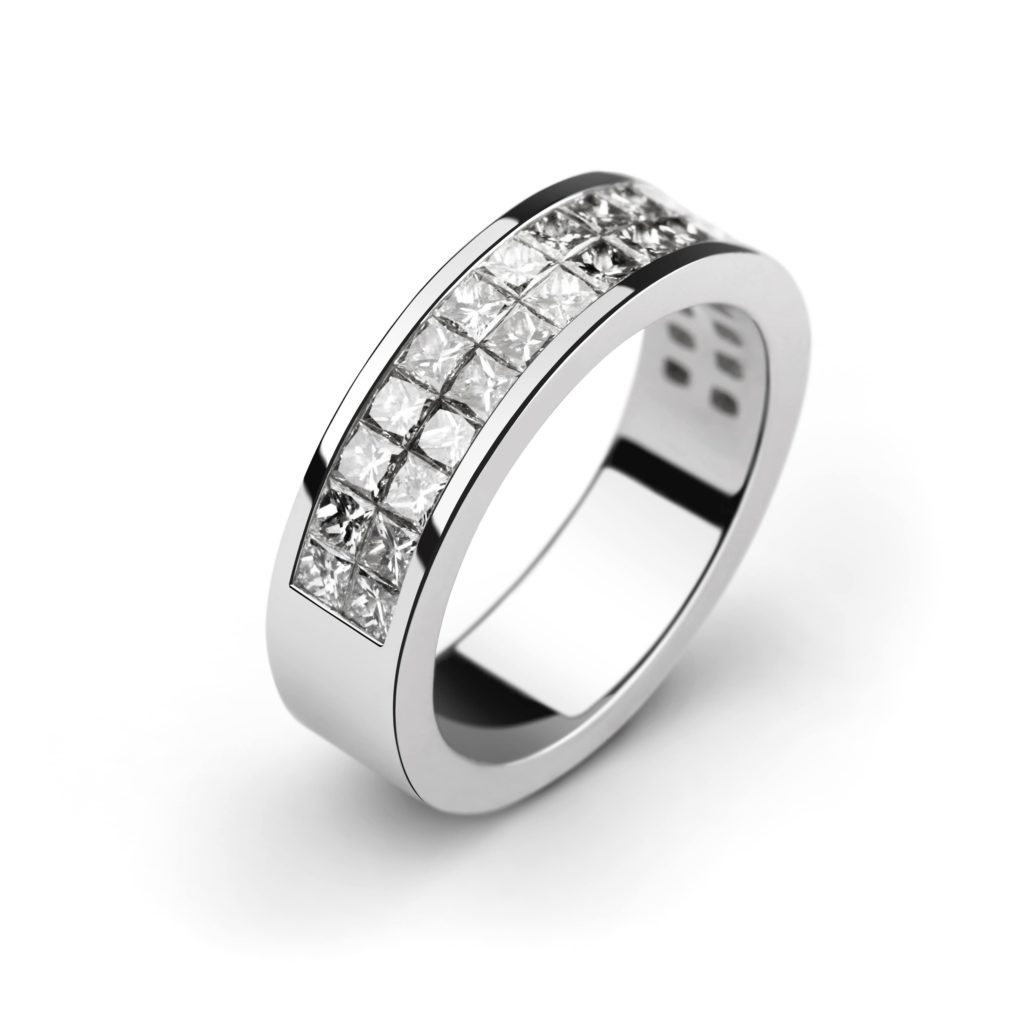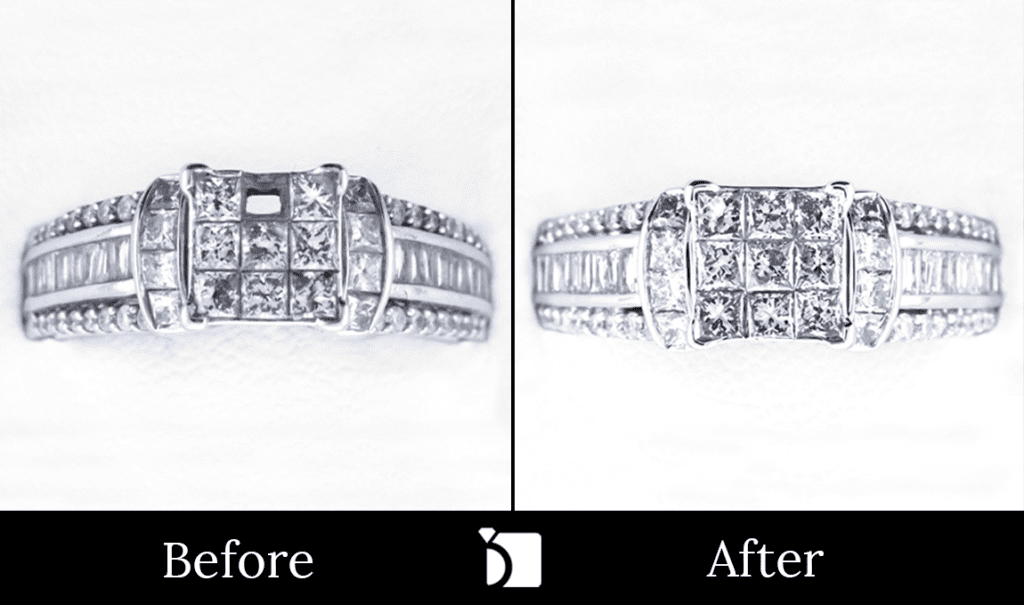What is an Invisible Setting and What Makes It Different?
A centuries-old, originally French technique, invisible set gemstone jewelry (aka the Invisible Setting), is one of the most beautiful setting types available. It involves the process of setting stones side-by-side, hiding the metalwork underneath, which can give the appearance of a larger stone. This technique creates an uninterrupted flow in the gemstones, thus producing the coveted “Invisible Setting”.
The most commonly shaped gemstones used in an invisible setting are the square and princess cuts. This is a very difficult setting type to create and work on since it requires the skill of a highly trained master jeweler. Also, this setting typically demands much more labor than what is necessary for other types of jewelry settings.

Invisible Setting vs. Mystery Setting- A Brief History
You may have heard an alternative term used for invisible settings known as “mystery setting.” But is there a difference between the two? Well…not really. Although these two variations of the technique are used interchangeably, “mystery setting” is really just another term for “invisible setting.” However, that wasn’t always the case.
Invisible Setting History
Invisible settings first began in Paris in the 1920s. An unknown jeweler named Jacques-Albert Algier patented and developed this method of holding a stone in place without showing the metal prongs or bezel. Algier accomplished this by carving grooves into the side of the pavilion, allowing the gemstones to slide along rails of precious metal. By doing this, he was able to mask the appearance of the metal and allow the gemstones to be the center of focus.
@myjewelryrepair If you’ve ever wondered if there’s a difference between invisible settings and mystery settings, here’s your answer! 💍 #greenscreen #diamond #diamonds #jewelry #ring #rings #emerald #emeralds #ruby #rubies #sapphire #sapphires #gemstone #gemstones #paris #cartier #gemstonejewelry #fyp #foryou #foryoupage #fypシ ♬ original sound – My Jewelry Repair
Mystery Setting History
Once invisible settings started taking off, Cartier got on board with the technique but did not end up producing any products. Due to this, their biggest competitors, french jewelry brand Van Cleef & Arpels, decided to take over. In December of 1933, Van Cleef & Arpels officially patented this setting which they called “serti mysterieux” which translates to “The Mystery Setting.”
The Mystery Setting was a huge success for Van Cleef & Arpels. For years, they designed and sold invisible setting jewelry. It wasn’t until the 1950’s that sales dropped after people’s tastes in jewelry designs and trends started to change. This exquisite style eventually made its comeback in the 1980s.
Today, “mystery setting” is just another phrase used for “invisible setting,” but the main difference between these two settings back then was the gemstones that were used. Invisible settings were most commonly used with diamonds only. Mystery settings incorporated colored gemstones such as emeralds, sapphires, and rubies with the main focus being to bring out the colors.
What makes an Invisible Setting different than other setting types?
Rare:
The invisible setting is not commonly used in jewelry design because it is an intricate and difficult setting type. Only the most experienced jewelers can properly set gemstones with this method. Additionally, the cost of labor and the time spent in making invisibly set jewelry adds to the value of your item.
Expensive and Highly Skilled Labor:
This setting is more expensive than other jewelry settings, and it requires special preparation of the gemstones. It also demands an experienced and skilled stone setter. For this reason, the invisible setting is more expensive than others due to the extra labor costs needed to create this beautiful design.
For more information regarding our pricing, please check out our Pricing page.

What You Need to Know about Invisible Settings
Look Out for the Glue Method:
We are proud of the service we offer as we know other jewelers without the capabilities have to resort to using a gluing method to keep the stones in place. Unfortunately, when stones are simply glued to each other, it creates a setting that is weaker and most likely will begin to loosen over time; that is why gluing is a practice that we don’t subscribe to.
Avoid Heavy-Duty Activity:
If you are someone who is into heavy-duty activities on a regular basis, then this may not be the setting for you. Heavy activity or a direct hit on small gemstones can loosen their grip. This creates a high susceptibility for gemstones to fall out.
Requires Additional Maintenance:
This setting has many places for dirt to hide and gather, which can lessen the sparkle of gemstones. Therefore, this type of setting needs routine professional cleaning to maintain the fire, sparkle, and brilliance of the gemstones. Also, routine professional inspections are required to make sure that the gemstones remain secure. This extra maintenance is good for you to consider before purchasing jewelry with an invisible setting.


Invisible Setting Repair Services
Are you in need of an invisible setting repair? You’re in luck! Here at My Jewelry Repair, we have a team of Master Jewelers that just so happen to be Invisible Setting Specialists.. The best way to secure invisibly set stones is to hand-cut grooves into the girdle of the gemstones. This method is time-consuming, and therefore it is more expensive. However, cutting the individual stones creates pressure between them, which keeps them secured within the metal framework so they are protected.
For more information on the Invisible Setting services we provide, feel free to check out our Invisible Setting Services page.

